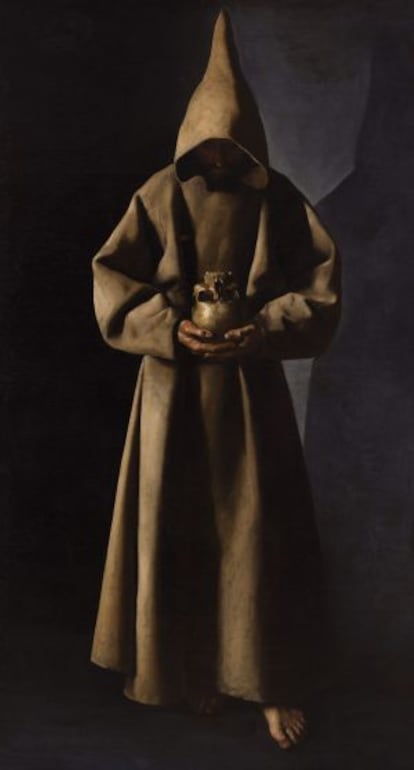Brussels discovers the mysticism of Francisco de Zurbarán
Exhibition covers every period of Golden Age painter's work


After walking up and down the hallways of the Palais des Beaux-Arts in Brussels, visitors finally come to one last painting by the 17th-century Spanish painter Francisco de Zurbarán: Saint Luke as a Painter, before Christ on the Cross. This artwork sums up an entire lifetime devoted to religious painting, and makes viewers wonder about the real identity of the man holding the palette and brushes. Is it really Luke, the patron saint of artists? If so, why don't we see any trace of his halo of sanctity?
But if it is actually a self-portrait of Zurbarán, as some suggest, why is he wearing an Evangelist's tunic?
"The painting is deliberately ambiguous. Rather than a self-portrait of his own physiognomy, it is a portrait of his world and of his vision of painting," explains Ignacio Cano, curator of this show about the Spanish master, which was recently inaugurated in Brussels.
"This is where you best appreciate the artist's complexity. It is part of the debate about to what extent painting can unveil what is unknown," adds Gabriele Finaldi, deputy director of conservation at the Prado Museum.
The crucified Christ before the painter is just one of 50 artworks that make up the most ambitious show on this exponent of the Spanish Golden Age since the 1988 traveling exhibition that stopped in Paris, Madrid and New York. The current selection covers every period, from Zurbarán's beginnings in Seville to his last paintings before his death in 1664.
This is the first time that Belgium has hosted any kind of exhibition on Zurbarán, either by a private or a public institution. Now, the man who embodied the ideals of the Counter-Reformation is being showcased in the country that serves as a religious border between Catholics and Protestants.
Anyone who sees the show will be struck by the influence of Flemish painting on the Spanish Baroque. "Showing here was a challenge," explains the curator. "Rubens also represents a Baroque school, but a very different one. Yet they share the strength of their images, their symbols, and the same visual culture."
"Zurbarán's attention to objects or garments draws from the source of Flemish masters like Van Eyck or Van der Weyden," explains Cano, former director of the Fine Arts Museum in Seville.
While the show will come as a surprise to those unfamiliar with Zurbarán's work, it also holds a few things in store for more seasoned visitors. The Palais des Beaux-Arts is displaying four previously unseen paintings and a few restored pieces that shine with a new light. One of the new items is Los desposorios místicos de Santa Catalina de Alejandría, a painting that used to hang inside the painter's house at the time of his death, and which had been missing since 1664.
Managers of the Palais also took care to establish a link with contemporary Spanish culture by including two sculptures by Cristina Iglesias, while Catalan director Albert Serra screened a selection of his experimental work within its walls.
Zurbarán, maître de l'âge d'or espagnol. Until May 25 at Palais des Beaux-Arts, Rue Ravenstein 23, Brussels. www.bozar.be







































